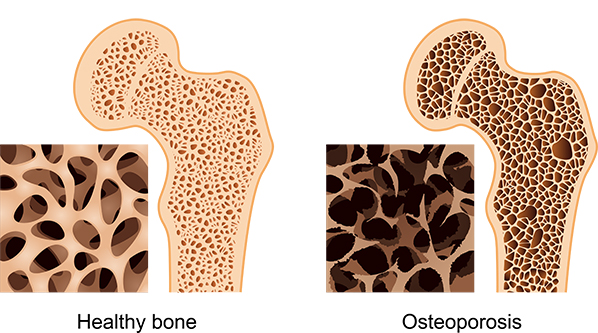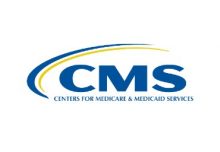Despite uncontrollable factors, there are ways to prevent Osteoporosis. Osteoporosis is linked to hereditary factors that your clients can not change, such as sex, age, and genes. There are ways, however, to improve and even prevent weakened bones. This includes adopting a healthy lifestyle and diet. Eating foods rich in calcium and vitamin D are important, as is regular exercise. In particular, weight-bearing exercises such as weight training, walking, hiking, jogging, climbing stairs, tennis, and dancing can stimulate bone cells to produce proteins that bolster bone strength.
What Is Osteoporosis?
The inside of a healthy bone looks something similar to a honeycomb, with the body constantly absorbing and replacing bone tissue throughout your client’s life. Starting around 30-35 years old bone density begins decreasing and over time new bone creation can not keep up with old bone removal. When osteoporosis occurs, the spaces in the honeycomb grow larger. As bones become less dense, they weaken and are more likely to break from a fall, often in the hip, spine, or wrist. According to the National Institute on Aging, osteoporosis is considered a “silent disease” because people may not notice any changes until a bone breaks. All the while, bones were losing density for many years.

Risk Factors in Men and Women
The risk of osteoporosis grows as both men and women get older, however, women are more likely to develop osteoporosis due to naturally smaller, thinner bones. Furthermore, estrogen, a hormone that assists with bones regrowth, decreases sharply when women reach menopause. This drastically increases the chance of postmenopausal women developing osteoporosis. During menopause, women may lose bone mass quickly for several years. After that, the loss slows down but continues. In men, the loss of bone mass is slower. But, by age 65 or 70, men and women are losing bone at the same rate.
The group at the highest risk for osteoporosis are White or Asian, postmenopausal women who have a small, thin body frame, and a family history of osteoporosis. The good news is, while your clients can not control hereditary risk factors there are many causes linked to Osteoporosis that your clients can control, such as:
- poor calcium and vitamin D intake
- smoking cigarettes (smokers absorb less calcium)
- excess amounts of alcohol interfere with vitamin D and calcium absorption
- lack of physical activity
- certain medications can cause bone loss such as, antacids, antiseizure medicine, chemotherapeutic drugs, to name a few. Consult with your doctor to find out if your medications are known to cause bone loss.

Prevent Osteoporosis
For many people, osteoporosis can be prevented at any age. It starts with a healthy lifestyle and diet to build strong dense bones. Advise clients to keep their bones healthy as they age with a diet rich in Calcium and Vitamin D. Since the body does not produce its own calcium it is important to eat calcium-rich foods such as collard greens, nuts, salmon, yogurt, tofu, and oatmeal. While calcium aids in bone regrowth, Vitamin D aids with calcium absorption. We naturally get Vitamin D from both sunlight and very few foods, (fatty fish, orange juice and fortified cereal) so it is recommended to take a supplement to get the recommended amount. Recommend to your clients to also reduce intake of caffeine, soft drinks, alcohol, and cigarette smoke which all inhibit calcium absorption.
In addition to a healthy diet, there are two types of exercises to prevent osteoporosis and maintain bone density: weight-bearing and muscle-strengthening. Weight-bearing activities make you move against gravity while staying upright. Examples include walking, climbing stairs, jumping rope, jogging, aerobics, or dancing. Muscle-strengthening activities include lifting weights, using elastic bands, or weight machines.
Finally, to prevent osteoporosis your clients should consult with their doctor about a Bone Mineral Density test, or BMD. This allows them to find out how strong their bones are. A BMD test compares their bone density to the bone of an average healthy adult bone and determines if they are at risk for having a fracture. Bone density tests are used to help guide decisions about treatment and osteoporosis medication.
Agents
Adults over 65, especially women, are at risk for developing osteoporosis. Know the risk factors, and make sure your client’s have a healthcare plan that will cover the costs of this condition.
Empower Brokerage is dedicated to helping you educate your clients on the insurance they need to get the most out of life. Whether it’s through webinar training, one-on-one calls, seminars, or marketing plans. We want you to be successful. Give us a call if you have any questions 888-539-1633.
Quick Links:
• Contracting Portal
• Check out Events
• Get Customized Marketing Materials




